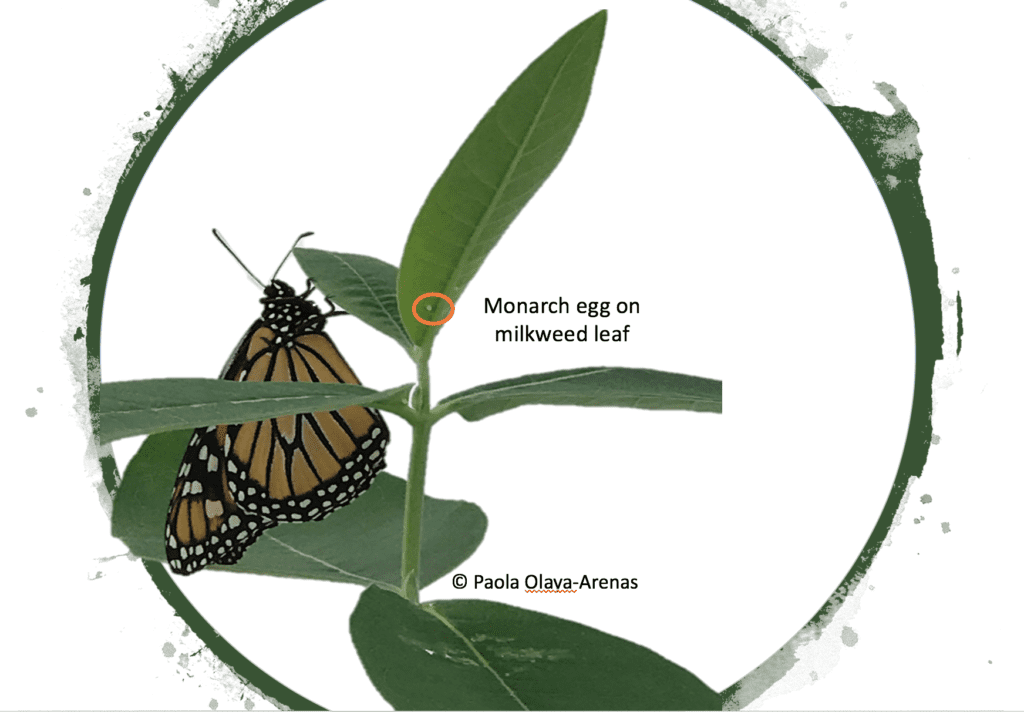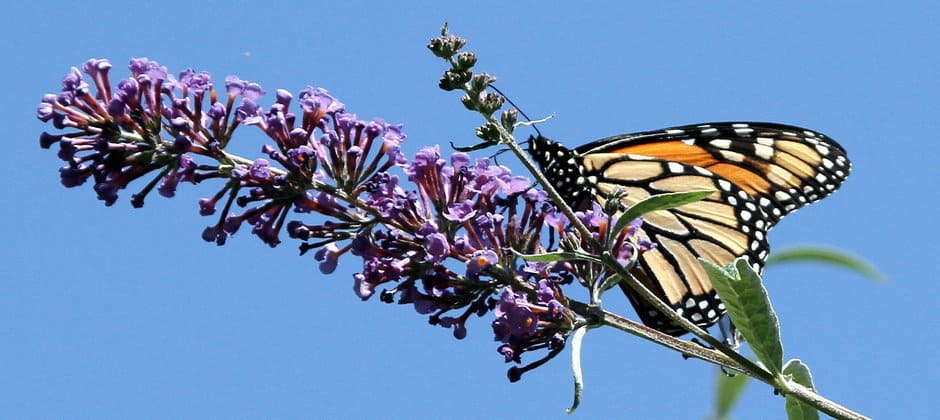Share this article
Monarchs prefer pesticide-free milkweed
Milkweed covered in pesticide cocktails repels egg-laying monarchs and their larvae — but the extent of chemical use in some areas may leave the butterflies with no choice.
“Their populations have been reduced in the last 20 years due to many factors like climate change and deforestation in their overwintering areas, but we know little about pesticides, especially non-insecticidal products like fungicides and herbicides,” said Paola Olaya-Arenas, a postdoctoral scientist at Purdue University.
Previous research on pesticides and pollinators mostly focuses on bees in agroecosystems, she said. And most of those papers involved researchers exposing bees to neonicotinoids and analyzing their reactions. “They rarely have given them a choice,” said Ian Kaplan, a professor in the Department of Entomology at Purdue University and co-author of the study.
Some research has shown that the milkweed the species relies on for breeding and feeding may be packed with pesticides. In a new study published recently in the Journal of Applied Ecology, Olaya-Arenas and her colleagues researched if monarch adults and larvae inhabiting the Indiana corn belt changed their behavior when encountering these pesticides.
The team conducted both laboratory and field research to help them tackle the question. They took known data on the quantity of commonly used pesticides, including one insecticide, two herbicides and three fungicides, on milkweed plants in the field. They exposed larvae and adult butterflies to these pesticides, and also combined some of the pesticides and tested the adult butterflies’ reactions. “For the adults, we only tested the mix [of pesticides], because that’s how you find them in the field,” Olaya-Arenas said.

Adult monarchs lay their eggs on milkweed plants. Credit: Paola Olaya-Arenas
The team treated milkweed with pesticides at the average and maximum capacity that they are found in the wild. After comparing butterflies’ reaction to these plants with control milkweeds that weren’t treated with pesticides, the researchers found that adult monarchs placed 30% fewer eggs on milkweeds treated with the pesticide cocktail than the pesticide-free control.
In their experiment, the researchers also found that larvae preferred pesticide-free milkweed when it came to four of the six compounds. Those larvae showed an aversion to feeding on the milkweed at both the mean and maximum concentrations of pesticides.
While it may seem like good news that the declining butterflies are able to avoid plants with potentially dangerous pesticides, there’s so little milkweed in the environment that they may not have many choices. “Most plants we found in the field are contaminated with pesticides” Olaya-Arenas said.
Kaplan agreed. “Monarchs are in no condition to be picky because of the reduction in milkweed over the past years,” he said. He also added that they may reject a plant with pesticide residue and go to another area that’s even less suitable.
For conservation purposes and management of natural areas, the researchers suggest a reduction in pesticide use and a redesign of crop/milkweed distributions within and between habitat patches in the landscape to help conserve the monarchs.
Header Image: Adult monarchs avoid milkweed with pesticides on them. Credit: Jim, the Photographer








